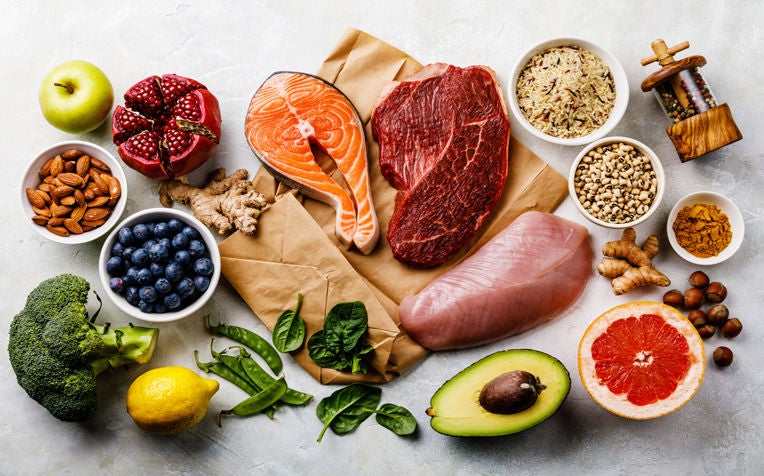HealthXchange will NEVER ask you to transfer money over a call. If in doubt, call the 24/7 ScamShield helpline at 1799, or visit the ScamShield website at www.scamshield.gov.sg.
Non-English translations are machine-generated; verify independently for
potential
inaccuracies.
Let us help you find what you're looking for.
Popular Searches
Food Tips for Iron-Deficiency Anaemia and ADHD in Children

Iron-rich foods that can help prevent iron-deficiency anaemia and ADHD in children.
Who is at risk of iron-deficiency anaemia?
Iron makes up a part of red blood cells that helps to carry oxygen in our body. Children below 5 years of age and teenagers are at a higher risk of iron deficiency due to their increased iron needs for growth. Teenage girls also have higher iron requirements after menarche (the first menstrual cycle).
Iron-deficiency anaemia occurs in those with more severe deficiency, and is related to frequent infections, poor weight gain, impaired cognitive and psychomotor performance and behaviour disorders.
“Iron deficiency can have long-term consequences, as demonstrated by poorer performance on developmental tests in late childhood and early adolescence,” says the
Nutrition and Dietetics Department at
KK Women’s and Children’s Hospital, a member of the
SingHealth group.
Tips to prevent iron deficiency in children
- During infancy, introduce iron-containing foods from 4 to 6 months of age when baby is developmentally ready to start semi-solids, e.g. iron-fortified cereals, pureed meats and fish.
- Avoid giving cow’s milk in the first year of life (apart from small amounts in custards, yoghurts, cheese and cereals). Also during the childhood years, avoid excessive milk intake as it may displace iron-rich foods in your child’s diet. Most children only need 500ml of milk a day to meet their calcium needs.
- Ensure regular consumption of iron-rich foods.
- There are two types of dietary iron – heme & non-heme iron.
- Heme iron is found in meat, fish and poultry and is better absorbed than non-heme iron.
- Non-heme iron is found in eggs, grains, vegetables, dried fruits, beans, nuts, legumes and iron-fortified cereals. The absorption rate of non-heme iron varies between 3% and 8% depending on the presence of factors, which enhance absorption as well as factors that inhibit absorption.
- There are two types of dietary iron – heme & non-heme iron.
- Iron absorption from non-heme sources is increased when taken with foods high in ascorbic acid (vitamin C) e.g. cauliflower, broccoli, cabbage, bell peppers, citrus fruits and strawberries, as well as heme iron. One way to enhance absorption is to offer your child fresh fruit after a meal. This is especially important if your child is a vegetarian as fruits can help optimise iron absorption from non-heme sources.
- Limit inhibitors of iron absorption with meals. For example:
- Foods high in phytates e.g. wheat bran and beans (legumes).
- Foods high in oxalic acid e.g. raw spinach and wheat bran.
- Foods high in tannins/polyphenols e.g. tea and coffee. If taken with meals, tea and coffee have been found to reduce iron absorption by 50% through the formation of insoluble iron compounds with tannin.
- Calcium carbonate supplements.
- Foods high in phytates e.g. wheat bran and beans (legumes).
Ref: N18
Public Events
30 Dec 2025
Talks
SKH Health Talk - Stay Ahead of Chronic Kidney Disease (CKD): Early Detection and Prevention
Free
Learn More
02 Jan 2026
Others
Art workshop by Singapore Poly Life Arts
Free
Learn More
02 - 30 Jan 2026
Others
Zumba Gold (Every Friday)
Free
Learn More
02 - 30 Jan 2026
Others
Cardio Dance (Every Friday)
Free
Learn More
Get the Health Buddy App
© 2025 SingHealth Group. All Rights Reserved.













 Get it on Google Play
Get it on Google Play